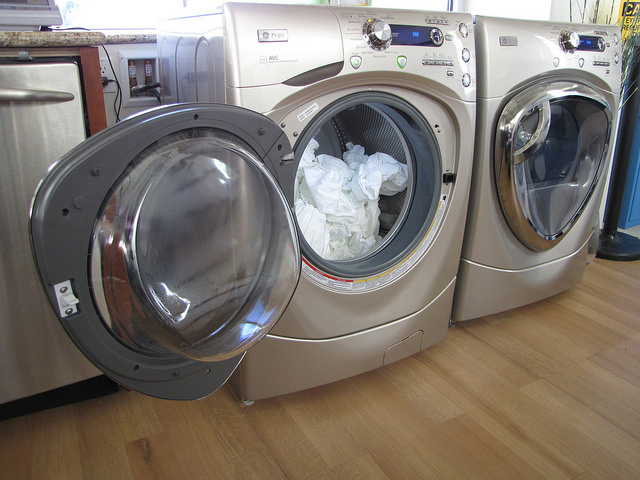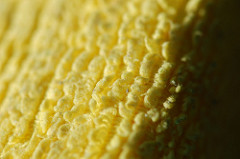
Photo: US Department of Energy
By Chloe Kiple
A new study shows that while we clean our clothes we dirty waterways like the Great Lakes.
Every load of laundry produces microfibers, or tiny pieces of clothing that shed during washing. Wastewater treatment plants can’t break them down, so they end up in lakes, rivers and other bodies of water.
Once they’re in the water, aquatic animals can mistake the fibers for food. And that’s not a good thing.
“Those fibers are getting stuck in their body and organs so when they accumulate a lot of it, it could lead to a poisoning of sort and choking,” says Shikha Singh, a Michigan State University fisheries and wildlife scientist with an interest in water quality.
The microfiber problem is multifaceted. At the manufacturing level, garment composition can determine how much an article will shed, said Singh.
At the consumer level, washing-machine models and frequency of laundering can further affect how many microfibers are released in the wash.
“People wash their clothes a lot,” Singh said. “The real problem is the water that contains the microfibers gets sent down to the sewage treatment plant and then from there it ends up in the waterways.”

After laundering, microfibers from our clothing can find their way into bodies of water and sicken fish. Photo: Steve Snodgrass
Clothing brand Patagonia funded graduate students at the University of California Santa Barbara to investigate these problems.
“Patagonia is trying to push that research because that’s the next step to get the rest of the industry to fall in line with this and do something about it,” said Niko Hartline, one of the university’s researchers on the project.
Microfibers are a subcategory of microplastics — small pieces less than five millimeters in diameter. They often come in the form of microbeads, which are small pieces used as exfoliating agents in household products like facial washes and toothpaste.
Many cosmetic and toiletry companies voluntarily eliminated microbeads from their products.
“It was beneficial for them against their competitors to show that they were using environmentally-cautious materials instead,” Hartline said. “It was actually beneficial for a lot of companies to kind of get on the bandwagon of banning microbeads because it was cost-effective for them to do so.”
While microplastics and microfibers pose the same kind of environmental hazard, the threat of microfibers has largely been ignored by policymakers and clothing manufacturers.
Patagonia is continuing to fund studies to find ways to reduce the threat of microfibers. A few proposals include changing garment composition to reduce thread loss and installing sieves in washing machines to catch loose fibers, Singh said.
But the challenges remain. “It’s more difficult for companies to find a solution [to microfibers] as simple as it was to microbeads,” Hartline said. “There’s no simple alternative.”
“Companies are weighing the benefits for addressing these threats. The economic incentive really is the green consumer.”